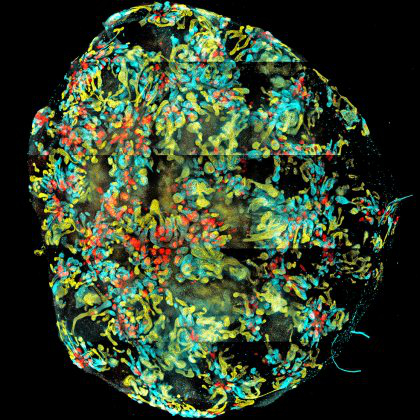Locals print more mini-kidneys
 Australian researchers have again improved the technology for 3D-printing human organs.
Australian researchers have again improved the technology for 3D-printing human organs.
A team from the Murdoch Children's Research Institute (MCRI) has used cutting edge technology to bioprint 3D human mini-kidneys in the lab, paving the way for new treatments.
They have also validated the use of 3D bioprinted human mini kidneys for screening of drug toxicity from a class of drugs known to cause kidney damage in people.
The team has even managed to produce large enough sheets of kidney tissue that they could be used for transplants.
Like squeezing toothpaste out of a tube, extrusion-based 3D bioprinting uses a ‘bioink’ made from a stem cell paste, squeezed out through a computer-guided pipette to create artificial living tissue in a dish.
MCRI Professor Melissa Little, a world leader in modelling the human kidney, first began growing kidney organoids in 2015. But this new bio-printing method is faster, more reliable and allows the whole process to be scaled up. 3D bioprinting could now create about 200 mini kidneys in 10 minutes without compromising quality, her studies have found.
From larger than a grain of rice to the size of a fingernail, bioprinted mini-kidneys fully resemble a regular-sized kidney, including the tiny tubes and blood vessels that form the organ’s filtering structures called nephrons.
Professor Little said by using mini-organs her team hope to screen drugs.
The studies have also showed the growing human tissue from stem cells also brought the promise of bioengineered kidney tissue.
“3D bioprinting can generate larger amounts of kidney tissue but with precise manipulation of biophysical properties, including cell number and conformation, improving the outcome,” she said.
Currently, 1.5 million Australians are unaware they are living with early signs of kidney disease such as decreased urine output, fluid retention and shortness of breath.
Professor Little said prior to this study the possibility of using mini kidneys to generate transplantable tissue was too far away to contemplate.
“The pathway to renal replacement therapy using stem cell-derived kidney tissue will need a massive increase in the number of nephron structures present in the tissue to be transplanted,” she said.
“By using extrusion bioprinting, we improved the final nephron count, which will ultimately determine whether we can transplant these tissues into people.”








 Print
Print